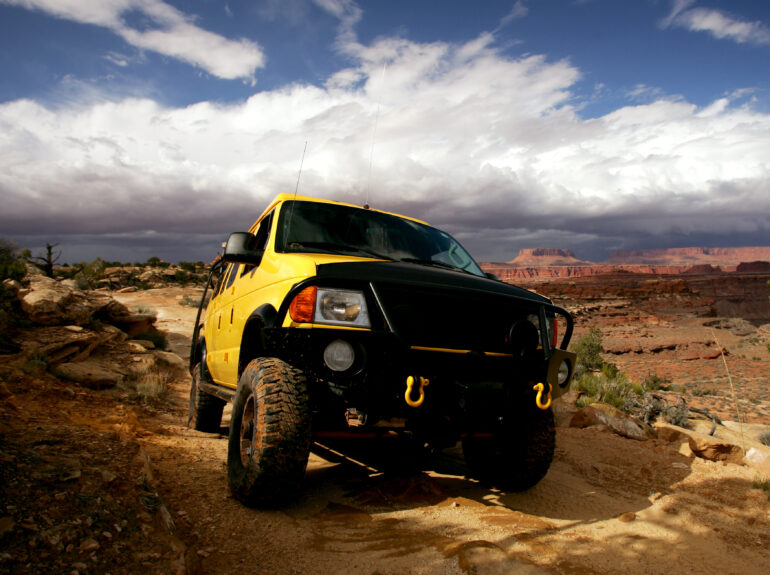In the past, there were only a few vehicles with four-wheel drive. These were mostly large trucks or full-size SUVs. The times have changed. Many vehicles sold in the U.S. now come with either an all-wheel-drive (AWD) or a four-wheel-drive (4WD) option, including camper vans. This makes them more versatile and appealing to a wider range of customers. That also applies to adventure van owners, who want the luxuries of an RV along with the capabilities of a 4×4.
What is the difference between AWD versus 4WD? Which is best for you? It can be difficult to distinguish between AWD and 4WD. This is especially true, as AWD systems have become more powerful, while 4WD systems have become more sophisticated, blurring the line between them. Different manufacturers often used these terms, adding confusion.
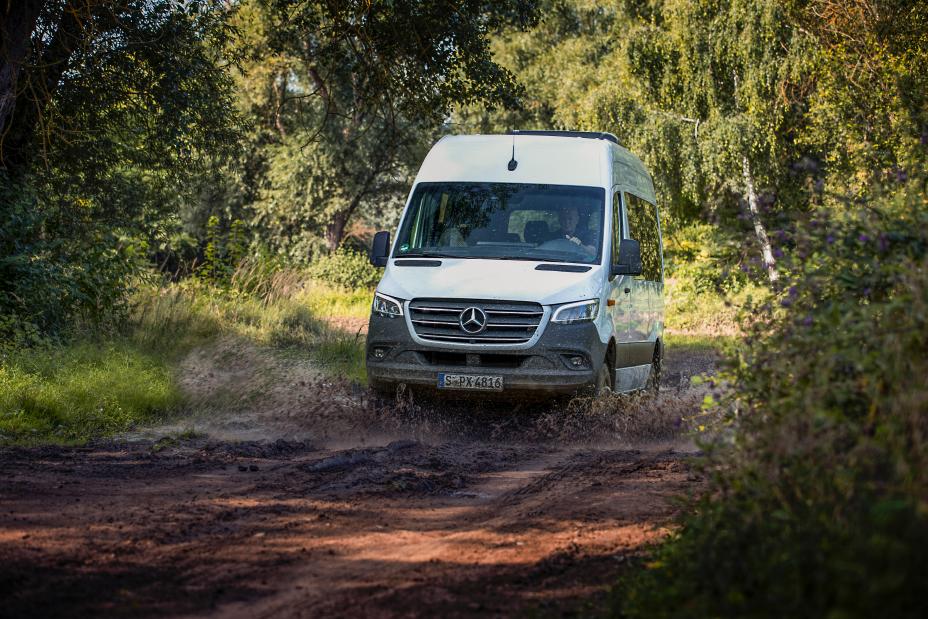
This article explains how each system works and the benefits and drawbacks of each. This information will help you make informed decisions when shopping for your camper van. Some of the best camper van builders have amazing AWD and 4WD options, that can balance your ride with your offroading capabilities.
What is All-Wheel Drive?
As the name implies, all-wheel-drive vehicles have systems that power both the front and back wheels. Two types of all-wheel drive systems are worth mentioning. The first is known as all-time or full-time AWD. AWD is available on the Vanlife favorite chassis, the Mercedes Sprinter through 2022 and the Ford Transit starting in 2020. It drives all four wheels continuously.
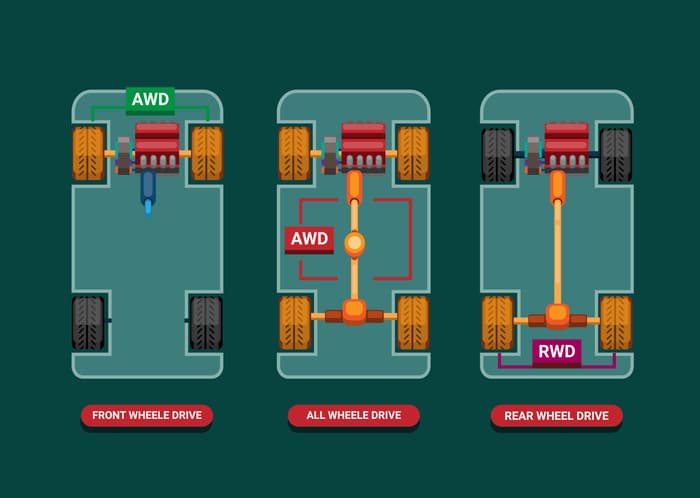
This second system is also an automatic AWD or part-time all-wheel-drive. It only uses AWD when it is necessary. These part-time systems operate in two-wheel drive mode, which can save fuel. AWD is only used when traction is required.
Part-time or full-time AWD systems work without driver input. However, some have selectable modes that give drivers more control over where power is going. The camper van traction can be optimized by using a variety of differentials, viscous couplings, and/or clutches to distribute power to all the wheels. Under normal conditions, the vehicle continues to operate smoothly.
Full-time AWD means that both the rear and front axles are continuously driven. This type of AWD is more effective on dry pavement as it helps the vehicle to handle better and gets maximum power to the road. It also provides extra traction in slippery conditions like ice, snow, or mud. This allows for better handling and consistent traction.
Part-time AWD transmits torque to two wheels in normal operation. This can be either the front or the rear, depending on the make/model. The system automatically engages the second and third wheels when road conditions require extra traction. Part-time AWD systems are equipped with various electronic sensors, which feed data to a computer that controls how much power is directed to each wheel.
Part-time AWD transmits torque to two wheels in normal operation. This can be either the front or the rear, depending on the make/model. The system automatically engages the second and third wheels when road conditions require extra traction. Part-time AWD systems are equipped with various electronic sensors, which feed data to a computer that controls how much power is directed to each wheel.
Pros and Cons of All-Wheel Drive
AWD doesn’t require the driver to make decisions about whether or not the system is engaged. Either all wheels are being driven simultaneously, or the system senses a loss of traction and sends power where needed. AWD is available for various cars, including performance and compact sedans and all sizes of vehicles. This gives you many options.
AWD can work in all conditions. However, serious off-roaders tend to consider it a less viable option. While this perception is changing as AWD systems become more capable, many drivers who enjoy exploring off-roading prefer to decide whether to use a four-wheel drive. AWD can also increase the vehicle’s cost and, in many cases, reduce fuel economy.
What is a Four-Wheel Drive?
Four-wheel drive is more common in large SUVs and pickup trucks, like my F150 Ford Raptor. It allows all four wheels to be driven. You can think of a vehicle with 4WD if it crawls on rocks, off-roading in the desert, or crosses rivers with water up to its mirrors.
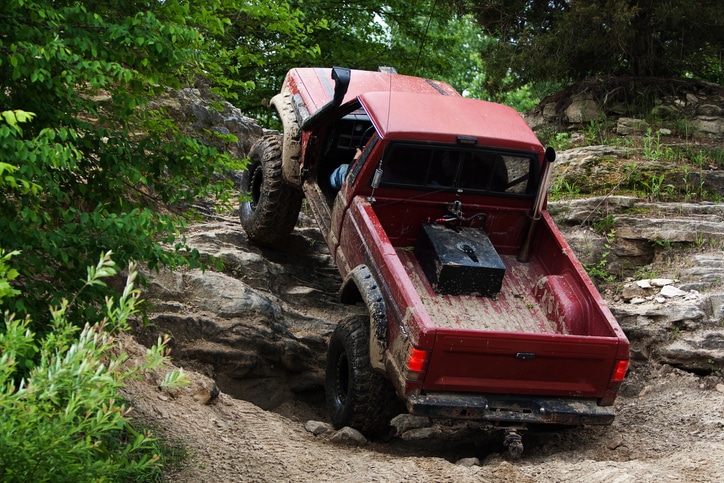
A mechanical connection generally drives 4WD systems. They use a series of front, center, and rear differentials and transfer cases to deliver torque to all four wheels. Although these systems have improved, they can be connected and disconnected via buttons and knobs. However, many older 4WD systems use a floor-mounted lever, which looks similar to a second gear shifter.
4WD, like AWD systems, is designed to transmit torque to all four wheels of a vehicle to increase traction. However, 4WD systems are more durable than AWD systems and can handle more rugged terrain. They also come in two versions: part-time or full-time.A lot of 4WD systems have both low and high settings that the driver can choose. This can be done via an electronic switch or a floor-mounted mechanical lever. The low setting will provide maximum traction for slippery conditions such as gravel, snow, ice, or packed snow. The high setting, however, is more suitable for off-road conditions.
Full-time 4WD works the same way as full-time AWD, where all four wheels receive power on an ongoing basis. Some designs allow the driver to control how power is distributed to the rear and front axles via selectable modes.
This system is the true traditionalist in four-wheel propulsion. It can be found most commonly in SUVs and trucks that are built to work in harsher conditions. The vehicle is driven by two wheels, usually in the rear. When 4WD is needed, the driver must decide whether to push a button or shift with a lever. Some systems allow drivers to lock their differentials for extra traction in severe off-road conditions.
Four-Wheel Drive Pros and Cons
4WD vehicles excel at handling all kinds of adverse conditions. These systems are available in luxurious trucks and SUVs that are well-appointed but designed for maximum pulling power and ruggedness. They are ideal for use in challenging terrain and work.
The design of 4WD vehicles has improved over the years. However, 4WD can be paired with a heavy-duty suspension depending on the model and make. This results in a stiffer ride than in an AWD or 2WD vehicle. These systems can hurt fuel economy and increase the vehicle’s initial price. You can compare the top AWD Cars that get the best MPG as you shop around.
Suspension for Offroading Vehicles
For many people, the suspension on their vehicle is an afterthought. However, for those who enjoy taking their adventure vans off the beaten path, suspension is an essential consideration. 4×4 suspension provides clearance for obstacles and helps distribute weight evenly, preventing bottoming out. In addition, 4×4 suspension helps protect against uneven terrain and provides a smoother ride over rough roads. For those who enjoy rock climbing or other off-road activities, 4×4 suspension is a must-have. By investing in a suspension system designed for adventure vans, you can ensure your vehicle can handle whatever the road throws at it.
4WD vs. All-wheel Drive in Snow
You can lose traction regardless of whether you drive with all-wheel drive, four-wheel-drive, or tire chains. Maintaining traction is dependent on your tires, speed, and road conditions. No matter your drive system, the braking distances will increase in snowy or wet conditions. A vehicle equipped with AWD/4WD can provide traction advantages in snowy and icy conditions. It is worth looking at the extra cost of AWD vs. 4WD, depending on your vehicle use and where you live.
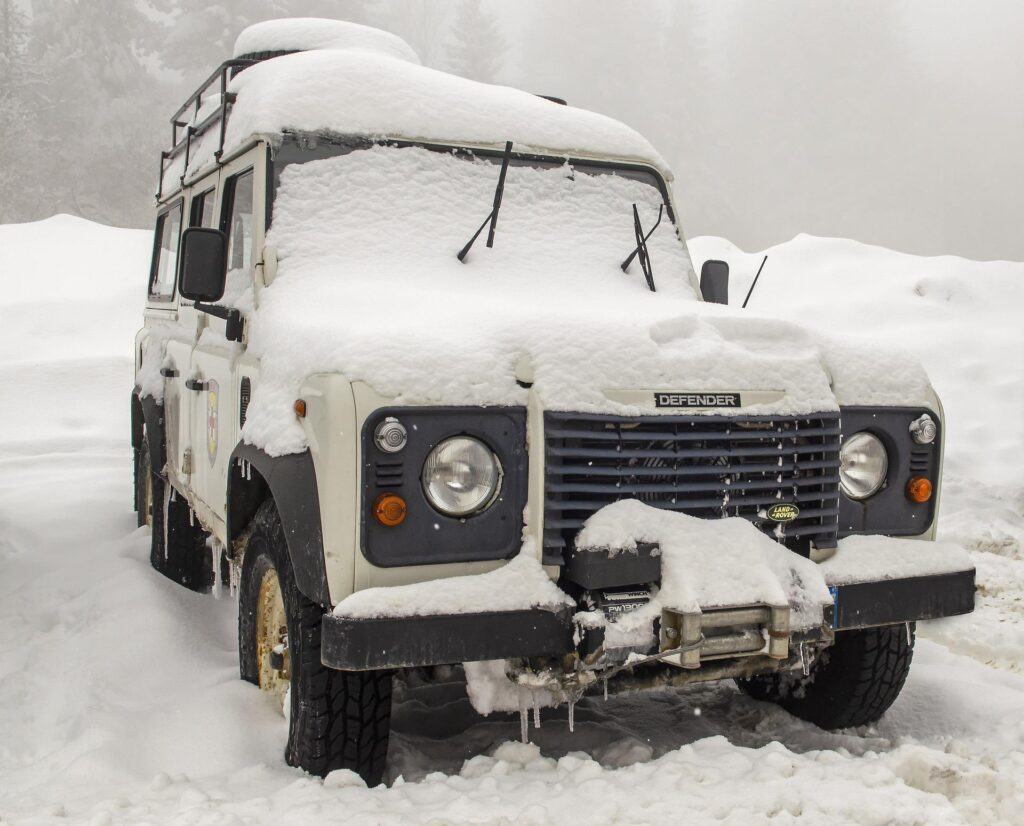
The likelihood of rapidly changing road conditions in colder climates, particularly those with snow and ice, is greater. AWD systems that can automatically engage four-wheel torque are ideal for these conditions. Modern AWD systems can be set up to choose between snow and low traction modes based on road conditions. However, systems left in default or automatic mode can perform faster than the driver.
4WD is better if you are navigating deep snow and other extreme conditions. AWD systems won’t handle icy hills or large snow drifts. 4WD systems can help you get out of jams more quickly.
Are you a 4WD or AWD Camper Vanlifer?
Your location and the road conditions you experience every day should determine whether you purchase a vehicle with 4WD or All-Wheel Drive adventure van. Personal preference is also important. Many users will decide between a Ford Transit chassis and a Mercedes Benz Sprinter based on their manufacturer preferences. Some camper van owners will value a camper van that has a premium interior package, while others are fine with an outdoor shower and a cassette toilet.

All-wheel drive is available for all vehicles, including camper vans, trucks and SUVs. AWD gives you a wider range of options to get off road. These vehicles provide better traction in winter conditions. Depending on the vehicle, they might even do some off-roading. These vehicles can be used as all-rounders, making it easier to save fuel and have better ride quality. They also provide power for all four wheels.
Although a vehicle with a 4-wheel drive may compromise ride quality and fuel economy, it is a great option for those who want to access remote locations. 4WD is the best choice if you are prone to extreme weather or enjoy off-road adventures. 4WD vehicles have higher ground clearance, allowing them to handle steep grades, deep snow, and rocky terrain. Part-time 4WD vehicles, which have low- and long-range features and offer greater driver control, are the best choice.

